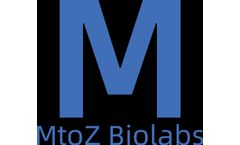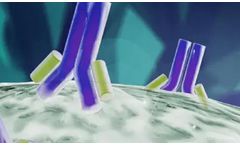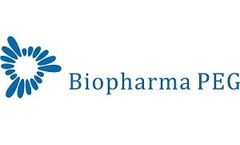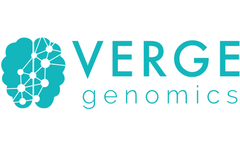Drug Toxicity Articles & Analysis
29 articles found
This diversity allows for the metabolism of a wide range of compounds, influencing the pharmacological effects and toxicity of drugs. Role in Drug Metabolism The role of cytochrome P450 in drug metabolism is two-fold: it can either detoxify drugs or convert them into active metabolites. ...
Antibody-Drug Conjugates (ADCs) represent a groundbreaking advancement in targeted cancer therapy, combining the specificity of antibodies with the potency of cytotoxic drugs. ...
Creative Bioarray establishes itself as a world leader in life science innovation through its complete range of organoid services that enhance drug discovery, disease modeling, and personalized medicine. Our advanced system delivers high-quality, reproducible organoids to researchers, enabling significant advancements in their scientific work. ...
For instance, larger animals such as dogs or pigs are often preferred in the study of cardiology, while zebrafish provide a rapid assessment of pharmacokinetics and toxicity. Phases of Drug Screening Drug screening typically unfolds in several key phases: Preclinical Testing: Before any drug can enter human trials, it undergoes ...
Disease MechanismsStudy changes in oxidative phosphorylation in various diseases (such as neurodegenerative diseases, cancer).3. Drug Screening and Toxicity TestingEvaluate the impact of drugs on mitochondrial function.Precautions1. ...
The cells can be used as model systems in phenotypic and drug screening, high content analysis, target identification, drug development, toxicology testing, gene editing studies, reporter assays. ...
One of the first steps in drug development and toxicity testing is creating cell models on which to evaluate the effects of chemical compounds on cellular, molecular and biochemical processes of interests. ...
Hepatocytes are the chief functional cells of the liver, responsible for the selective uptake, metabolism and excretion of most drugs. Cells for use in plate cultures or suspension assays represent a key tool for predicting properties such as hepatotoxicity, metabolism, and potential drug-drug interactions. Since these cells mimic the properties ...
The actual dose of drug delivered by the ADC to the tumor is very small, which means that the drug molecule must be extremely cytotoxic, although this may cause toxic side effects. ...
Application of flow cytometry in drug development and research FC has a wide range of applications and participates in all aspects of the entire drug development process, including drug development and target confirmation, non-clinical safety and toxicity evaluation, and clinical research. 1. ...
When the DAR increases, the drug metabolism rate of ADC drugs increases, the half-life decreases, and the systemic toxicity increases. ...
This technique has emerged as a powerful tool in drug discovery and design. Docking services can be used to identify potential drug candidates, optimize the activity and selectivity of drugs, predict the toxicity of drugs, and design new proteins with specific functions. ...
One of the reasons for the failure of Gemtuzumab was that the linker used at that time was chemically unstable, and it was easily hydrolyzed when it did not reach the target, so that the drug was more toxic. As the first generation of ADC, it is also a major breakthrough of ADC. ...
Biological Analysis of ADC In order to characterize the PK characteristics of different ADC components, several analytical methods are required: (1) ELISA determines the kinetic curves of the conjugate and total antibody. (2) TFC-MS/MS can quantify the free drugs or metabolites. (3) High-resolution mass spectrometry for in vivo drug antibody ratio (DAR) analysis. ...
We have biotechs seeking cures for incurable genetic diseases and companies seeking to tap the latest digital tech in artificial intelligence and machine learning to discover better drugs faster. There are those that want to drug the undruggable, while others tapping RNA to treat cancer or leveraging older promising technology but using cutting-edge techniques to ...
Advantages of Liposomes as Drug Delivery Vehicles l As drug delivery vehicles, liposomes have low toxicity and immunogenicity, and the high biocompatibility and biodegradability of their components—phospholipids can increase the in vivo drug concentrations and protect drugs from degradation. l They can be ...
Due to their advantages of biodegradability and non-toxicity, liposomes can be used as vaccine delivery vehicles. The protective effect of loaded molecules makes liposomes a good candidate carrier for oral vaccines.Oral administrationIt has been reported that the main factors affecting the stability of oral drugs include bile, pH values and pancreatic enzymes in ...
Adcetris, Polivy, and second-generation cleavable linkers Meanwhile, Seagen (formerly Seattle Genetics) designed its own coupling technology to bioconjugate marigold (MMAE) to the cysteine residues of anti-CD30 antibodies via the cleavable linker mc-VC-PABC, which contains a maleimide-based spacer, a standard Val Cit dipeptide sequence as a histoproteinase substrate, and a PABC self-degrading ...
For a long time, electrophilic groups have been a minefield in drug development. Therefore, in the classic medicinal chemistry textbooks of the past, it is always recommended to avoid introducing functional groups such as epoxide, acridine and Michael receptor into the structure of drug molecules, because these functional groups are highly reactive and may ...
Antibody-conjugated drugs are unstable in the blood, and small toxin molecules are released early, resulting in serious toxicity, leading to the withdrawal of the first drug from the market in 2010. ...










